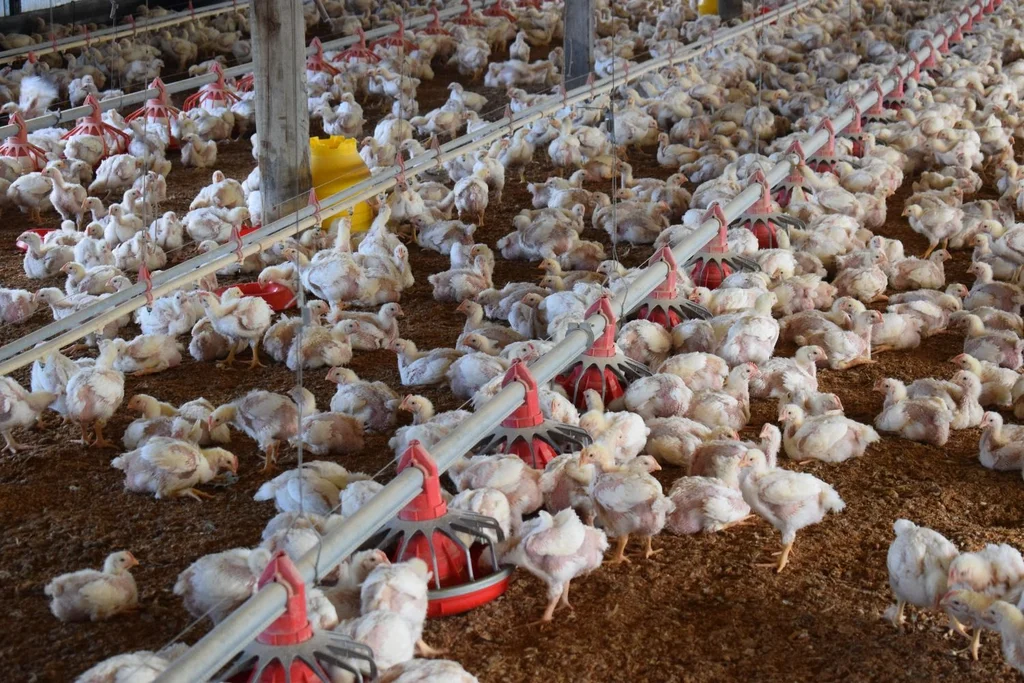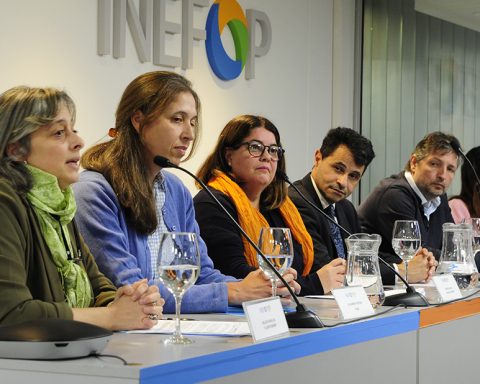consumption of poultry meat in Uruguay increased by 32% in the last three yearsadvancing to 24.5 kilos per capita in 2022 and asserting in the second position of ranking of most consumed meats in the domestic marketfar from the bovine that leads with almost 50 kilos, but already above pork (around 20 kilos).
The data was highlighted by the Uruguayan Chamber of Poultry Processors (Cupra) taking as a framework a new July 7, Latin American Chicken Day.
As indicated by the aforementioned industrial chamber, the increase is the result of joint work between the public and private sectors, through which campaigns were implemented to promote the consumption of this meat.

Photo: Leonardo Carreno.
Demand for chicken meat increased.
It was also pointed out that The Uruguayan poultry industry employs more than 4,000 people directlymostly women and thousands of others indirectly.
With the aim of making the sector grow, the chamber proposed to the government in 2021 an export project that implies increasing production by 70%, exporting US$ 65 million and creating some 2,500 additional direct jobs.
This project involves specifying the access of Uruguayan poultry meat to markets such as China, Hong Kong, Saudi Arabia, South Africa, the United States, Chile or the European Union, with different types of cuts according to the characteristics and demand of each market. .

John Samuelle
Broiler chicken fattening.
chicken day
On July 7, he was selected for the mentioned commemoration by the members of the Latin American Poultry Association (ALA), with the aim of highlighting the importance of this animal protein for the sector and for the nations of the continent.
Based on data from ALA and the Latin American Chicken Institute (ILP) –the arm of the association to promote protein consumption on the continent–, the production of the member countries of Latin America grew more than 20% in the last 10 years.
Currently, the sum of production in Latin American countries stood at 28.8 million tons in 2022, according to data provided by the associations of ALA member countries.
To get an idea of the representativeness of the region, Chicken meat production in the continent is equivalent to almost 30% of the 101 million tons produced worldwide.
In absolute numbers, the region’s production is almost 10 million tons higher than that of Europe, with a total of 18.8 million tons, according to the United States Department of Agriculture (USDA) database.
Most of the production is destined to supply the population itself, which has a significant per capita consumption, according to data from ALA and ILP.

Presidency of the Republic
Chicken slaughter.
Annually, on average, each Latin American consumes 39.4 kilos per capita (2022 data), almost double the European per capita consumptionwhich added up to 42 pounds per capita, according to the Poultry Trade and Poultry Processors Association of America.
The region also stands out with the world’s largest export of chicken meat. In 2022, the countries of the region exported 5.3 million tons of the 13.5 million exported worldwide, equivalent to almost 40% of all international trade in chicken meat..
Reference production
“Chicken meat production in Latin America is a benchmark for the world in terms of quality, productive efficiency and sustainability. Among our nations we have several highlights, from large producers to public consumers with per capita consumption rates among the highest on the planet. Our diversity is our greatest strength and makes our productive chain a foundation for the food security of our peoples and of various nations of the world”, said the president of ALA, the Uruguayan Joaquín Fernández.

piqsels
poultry meat
value protein
Chicken meat, highlighted in a report sent by Cupra, is one of the most consumed proteins in Latin American countries, and this is no coincidence, it is because it is one of the most complete and healthy proteins that exist.
According to nutritional data provided by the Chicken Meat Nutritional Information Center (Cincap), of Argentina, a small cut of 150 grams of skinless chicken meat provides the equivalent of 52% of the daily needs of an adult in a daily diet of 2,000 calories. Of phosphorus, they are 46% of the total daily needs. Chicken meat is also rich in vitamins and minerals, and contains low levels of fat and sodium.
Being such a complete food, It is suitable for all stages of lifefrom childhood to adulthood and the elderly, and is especially recommended for periods such as pregnancy and lactation.
In addition, it is one of the favorite proteins of athletes, thanks to its high levels of protein and low levels of fat.

piqsels
Chicken, the second most consumed meat in Uruguay.

















